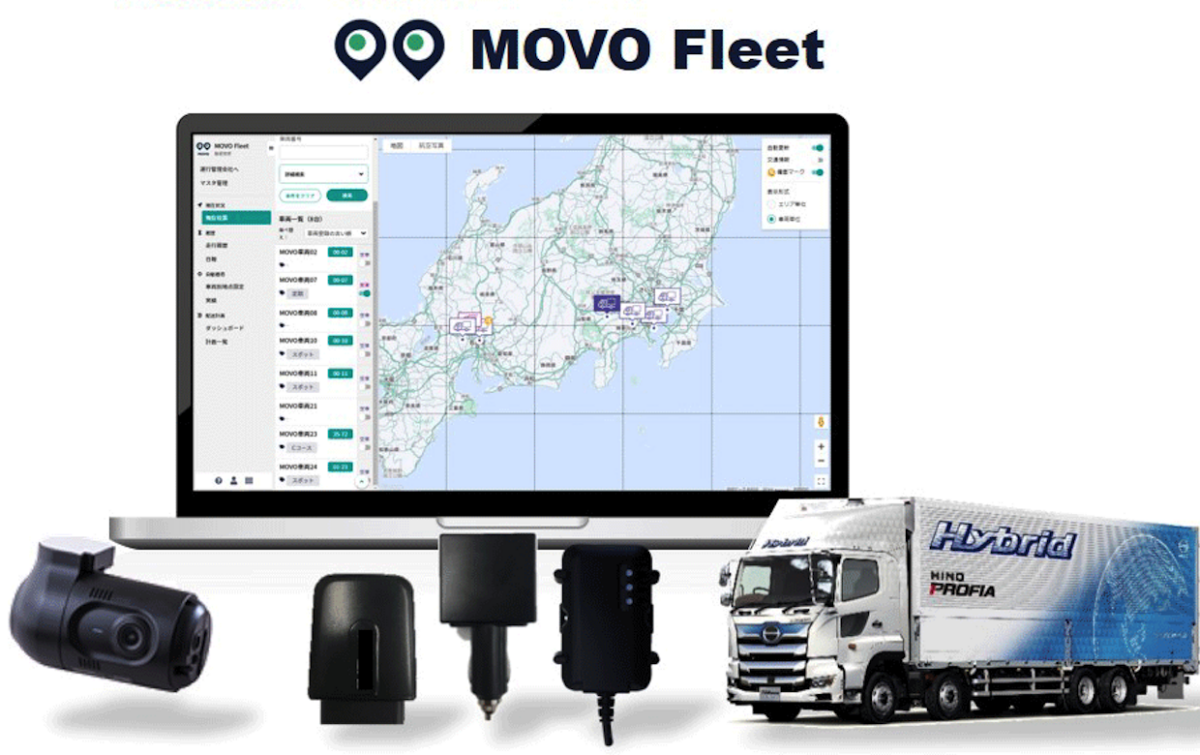Hacobu, Co.
Using IoT Devices to Digitize the Logistics Industry
The Opportunity
An Industry Without a Standard Tracking Solution
As the world grows more connected with the evolution of IoT technology, online retail has exploded. In the US alone, online retail purchases are expected to generate more than $1.6 trillion in revenue by 2027, with related industries expanding to help facilitate these purchases. Chief among those support structures is the global logistics industry, which is expected to reach a valuation of $6.55 trillion in the same time frame.
Unfortunately, global staffing challenges mean that the demand for logistics services is quickly outstripping the capacity of the workforce as it currently exists. To address these issues, the logistics industry needs to break away from legacy systems and embrace new, smart technological solutions.
“Logistics is an analog world centered on the exchange of paper and faxes,” said Hiroki Kusumi, Product Manager at logistics solutions provider Hacobu Co. “In order to work around the shortage of truck drivers, we need to acquire data through digitization, eliminate waste, and improve efficiency.”
Focusing on modernizing B2C package delivery, the most commonly observed logistics application, major courier companies have begun deploying digitized solutions to both provide real-time status updates and allow for contactless deliveries. Hacobu seeks to create similar systems to help improve efficiency in the business-to-business (B2B) area.
The logistics industry is made up of manufacturers, transporters, wholesalers, and various other players working together to transport goods as needed. The B2B world is mostly made up of small- and medium-sized businesses, meaning there are tens of thousands of logistics operations in each operating off its own systems and in dire need of optimization– particularly when dealing with the various system formats of their business partners.
“We set out to create a system that could be used commonly among operators, and develop a solution to digitize and streamline the management of delivery status and communication between operators,” said Kusumi.

Hacobu Co.“Soracom had a high affinity for developing low-cost, easy-to-manage services.”
The Solution
An Affordable Service for Small- and Medium-sized Businesses
Hacobu’s service consists of five applications collectively called “MOVO,” and is designed to function alongside complementary services and products from outside companies to create an effective end-to-end logistics ecosystem.
These solutions include:
- MOVO Fleet: A movement manager that tracks vehicle locations and routes
- MOVO Berth: A tool for truck reservation and other reception services
- MOVO Vista: A delivery case management service
- MOVO Seek: Distribution and material monitoring
- MOVO Dispatch: A vehicle dispatch management system
Central to this suite is the movement management service MOVO Fleet, the first of these services developed by Hacobu. By attaching a GPS-equipped IoT terminal to a truck, this service enables the operator to determine the truck’s current location, lay out an optimized delivery route, and provide accurate ETAs to end customers. Since 2018, the device has also doubled as a drive recorder, which can track a host of atmospheric factors, such as the amount of CO2 emitted by the vehicle.
MOVO Fleet was developed out of what Kusumi believed to be a need for more affordable solutions tailored to B2B logistics companies.
“We saw small and medium-sized transportation companies unable to improve and streamline their delivery routes because they couldn’t afford to efficiently monitor the status of their vehicle deliveries,” said Kusumi. “We thought that by providing a tool that would allow them to manage their dynamic information inexpensively, we would be able to raise the level of digitization in the industry as a whole.”
The MOVO system helps logistics companies maximize efficiency by digitizing antiquated practices such as the phone relay. In the case of traffic congestion, bad weather, or natural disasters, for example, the company would have to call the driver, or their subcontractor company, and then the client company would call the driver to confirm…and so on. The IoT device at the heart of MOVO Fleet service, meanwhile, transmits vehicle data every five seconds, replacing these legacy structures with a means of asset management that is closer to real time.
The MOVO Fleet further simplifies the process by creating a dashboard that collects all of the necessary information in a single, accessible place. “Another key point is that if we install IoT devices in the vehicles of our subcontractors, they can be managed on the same screen as our own vehicles,” said Takeshi Yoshida, Engineering Manager at Hocobu.
There is also a function that allows users to manage the delivery plans of an entire fleet of vehicles all at once, including ETAs, route status, and driving history. This enables a host of additional features, such as alerts when a vehicle has been delayed and route optimization through travel time analysis.
Why Soracom?
Comprehensive Connectivity, Pay-As-You-Go Pricing, and a Powerful User Console
When searching for a connectivity partner, Hacobu put the consumer first, recognizing that an affordable solution was the only way to reach the levels of digitization that they sought. Their search eventually led them to Soracom, where pay-as-you-go pricing and superior connectivity options within their areas of operation set the provider apart from the competition.
“The first requirement in terms of communication was to keep costs down,” Kusumi said. “We considered whether there was anything suitable for our usage environment, where communication is frequent but the data volume is not that large at a time.”
The MOVO Fleet sends and receives data over cellular connectivity via Soracom Air, which provides not only a transparent pricing model based on data usage, but also gives them access to a powerful user console from which they are able to monitor their entire fleet of mobile devices from a single location.
“It was also important to be able to monitor the communication status remotely,” Kusumi added. “Soracom’s ability to do so from the management screen was also highly valued.”
Scalability was another essential feature for the Hacobu team, as the MOVO suite expanded considerably in its infancy, and has already been embraced by more than 500 manufacturers, retailers, and other logistics companies. In this respect, they found Soracom easy to use, with the process of ordering new SIMs being easily handled within the User Console. The various API commands available within the console were another bonus, as they provided yet another outlet for improved efficiency.

The Outcome
Digitizing Logistics One Truck at a Time
Since its introduction in 2018, the MOVO suite of products has exploded, carving its own space in the Asian logistics industry. Though it was initially designed with SMBs in mind, the innovations it brings to the trucking and shipping process have found fans at the enterprise level as well.
“Today, the system is used not only by small and medium-sized transportation companies but also by major retail and wholesale distribution companies,” Kusumi said.
One successful example of this is a transportation company that originally implemented MOVO to manage its fleet dynamics. Through route optimization using MOVO Fleet data, the organization was able to reduce its delivery fleet by eight vehicles, eventually using those vehicles to start a new business.
For their part, the Hacobu team is looking beyond telematics and asset management and hopes to continue to expand the scope of the MOVO system to address additional, emerging challenges of the modern logistics industry. This includes the challenges associated with global climate change, as the organization is looking at means of reducing CO2 emissions.
“We would like to provide functions and data that can support these efforts,” Kusumi said. “We want to help support various challenges in the logistics industry digitally.”
